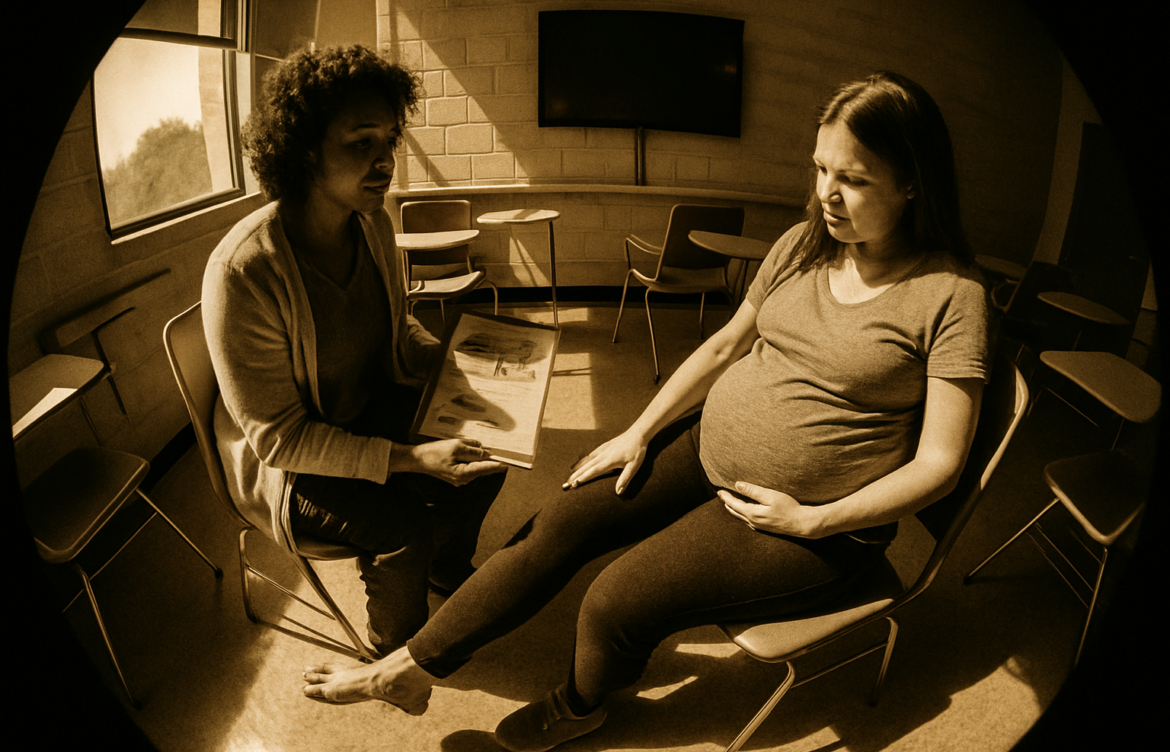
How To Manage Leg Pain During Pregnancy Safely
Don’t Forget Overall Health
Supporting your overall health during pregnancy lays the foundation for easing leg pain and improving your comfort day-to-day. A few key habits go a long way.
Prioritize Balanced Nutrition
A well-rounded diet fuels your muscles and helps prevent fatigue and cramping. Focus on:
- Lean proteins for tissue repair and energy
- Leafy greens, fruits, and whole grains for essential nutrients
- Foods rich in potassium and iron to maintain circulation and muscle strength
Boost Calcium and Magnesium Intake
These two minerals help regulate muscle contractions and may significantly reduce cramping.
- Calcium-rich options: Dairy, fortified plant milks, leafy greens
- Magnesium-rich options: Nuts, seeds, legumes, whole grains
- Ask your healthcare provider about safe supplementation if needed
Keep Up with Health Checkups
Your body’s systems all work together, especially during pregnancy. Staying on top of your health helps prevent complications before they start.
- Schedule regular prenatal visits
- Don’t overlook oral care—gum inflammation and dental issues can affect your full-body health
- Consider a dental checkup if it’s been a while
Read more on dental care during pregnancy
Staying aware of your overall health supports not just your muscles and joints—but your entire pregnancy journey.
What Causes Leg Pain During Pregnancy?
Leg pain during pregnancy isn’t random—it’s the result of some big changes happening in the body.
First, circulation slows down. Pregnancy increases your blood volume, but your veins take their time moving all that fluid, especially from your legs back to your heart. That backup can lead to swelling and discomfort.
Second, there’s the weight gain. Your body’s carrying more—between the baby, placenta, fluids, and extra fat stores. That puts more pressure on the muscles and joints in your lower body, especially in your hips, knees, and ankles.
Third, hormones shift. The hormone relaxin kicks in to loosen ligaments and joints, preparing your pelvis for birth. But it doesn’t just target your pelvis. Joints all over your body become less stable, messing with your posture and balance. That subtle shift in how you hold yourself can throw your legs off track.
And finally, nerve compression. As your uterus grows, it can press on nearby nerves. The sciatic nerve, which runs from your lower back through your hips and down your legs, is especially vulnerable. When it gets pinched, you get that deep, nagging ache or shooting pain known as sciatica.
Each of these factors—on their own—is manageable. Combined, they can make simple things like sitting, walking, or sleeping more complicated. But knowing what causes the pain is the first step in dealing with it.
Staying on your feet may feel like the last thing you want to do, but gentle movement can go a long way. A short walk, basic stretching, or a few rounds of prenatal yoga can get your blood flowing and ease the tightness. You’re not training for a marathon—just keeping things moving to fight off cramps and stiffness.
Don’t forget your water bottle. Muscle cramps get worse when you’re dehydrated, which is an easy trap to fall into during pregnancy. Try aiming for 8–10 glasses a day. Sip consistently instead of chugging later.
Posture matters more than you might think. Sitting or standing too long without shifting positions can mess with blood flow and make pain worse. When sitting, prop your feet up if you can. At night, sleeping on your left side is a small move with a big impact on circulation.
Let’s talk shoes. If your footwear looks better than it feels, it’s probably not doing your legs any favors. Skip the heels. Look for a pair with support and real cushioning—your joints will thank you.
Elevating your legs whenever you’re off your feet isn’t just relaxing—it actually helps drain excess fluid and minimize swelling. Compression socks can give extra support days when you’re on your feet more than usual.
Finally, a gentle massage or a soak in a warm bath (not too hot) can work wonders. Think of it as a reset button for tired muscles. Just keep it safe and stick to prenatal-safe techniques.
Need more help easing the discomfort? Explore more tips for relieving leg pain.
What To Avoid

When leg pain strikes during pregnancy, the instinct might be to reach for whatever works fast. But not everything is safe—or helpful. Here are three habits to put on pause:
-
Over-the-counter medications without consulting your doctor
Painkillers or muscle relaxants might seem like a quick fix, but many medications carry risks during pregnancy. What’s safe for someone else might not be safe for you or the baby. Always run it by your doctor first. -
High-intensity workouts
Staying active is good—but going all out isn’t. High-impact or overly strenuous routines can strain already-tense muscles and joints. Keep it low-key: think walking, swimming, or prenatal yoga. -
Standing still for long periods
Long stretches on your feet, especially without movement, make leg swelling and pain worse. Blood pools, circulation slows, and muscles cramp. If you have to be on your feet, shift your weight, take sitting breaks, and stretch when you can.
When To Seek Medical Help
Some leg pain in pregnancy is normal. But there are red flags you shouldn’t ignore. If swelling in your legs doesn’t ease up by the end of the day—or gets worse fast—it could signal a bigger issue. Pay close attention if the pain is only in one leg and comes with redness or warmth. These are warning signs of a potential blood clot, and they need medical attention immediately.
Cramping that sticks around no matter how much rest, stretching, or hydration you get? Also a concern. It might mean there’s something more than regular pregnancy pain going on. Trust your instinct. If something feels off, bring it up with your provider right away. Better too cautious than too late.
Final Word
Leg pain during pregnancy isn’t rare, and it doesn’t have to rule your day. It’s your body adjusting in real-time to major internal and external shifts—circulatory, hormonal, and structural. But that doesn’t mean you just have to deal with it. Tuning in early and trying a few practical adjustments—movement, hydration, posture, and support—can reduce discomfort before it snowballs.
It’s not about perfection. It’s about finding what gives you relief and sticking with it. Something as simple as swapping shoes or adding a few stretches to your morning can change everything. The key is consistency.
Your comfort matters—and small moves can lead to big results.

 Angela Labombard is the visionary founder and lead copywriter of Mummy Vibes, a blog dedicated to the multifaceted journey of motherhood. With a passion for storytelling and a deep understanding of the parenting landscape, Angela has created a platform that resonates with mothers across the globe. Mummy Vibes is more than just a blog; it’s a community where mothers can celebrate their joys, share their struggles, and find practical advice for navigating the complexities of parenthood. Angela’s commitment to empowering mothers shines through every post, whether it’s offering tips for sleepless nights or celebrating the achievements of inspiring moms. Her ability to connect with her audience on both the joys and challenges of motherhood has made Mummy Vibes a go-to resource for parents seeking support and inspiration on their parenting journey.
Angela Labombard is the visionary founder and lead copywriter of Mummy Vibes, a blog dedicated to the multifaceted journey of motherhood. With a passion for storytelling and a deep understanding of the parenting landscape, Angela has created a platform that resonates with mothers across the globe. Mummy Vibes is more than just a blog; it’s a community where mothers can celebrate their joys, share their struggles, and find practical advice for navigating the complexities of parenthood. Angela’s commitment to empowering mothers shines through every post, whether it’s offering tips for sleepless nights or celebrating the achievements of inspiring moms. Her ability to connect with her audience on both the joys and challenges of motherhood has made Mummy Vibes a go-to resource for parents seeking support and inspiration on their parenting journey.
